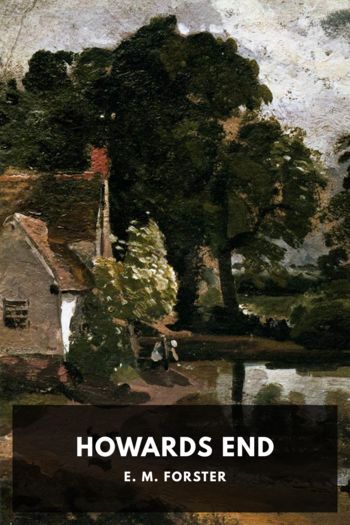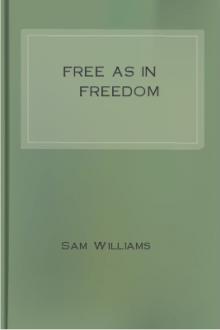How to Become a Witch Amber K. (reading books for 7 year olds TXT) 📖

- Author: Amber K.
Book online «How to Become a Witch Amber K. (reading books for 7 year olds TXT) 📖». Author Amber K.
If you’re very auditory, then imagine the note that your aura is humming; is it clear, strong, and even? Move your hand over different chakras, and listen to the hum change. Over time, you can learn what the changes in pitch, volume, and timbre tell you about the health of each chakra.
To be more thorough, focus on each of the seven major chakras and evaluate them in turn. Trust your intuition, your “inner bell.” If a chakra feels weak or painful, breathe healing light into it: take a deep breath and imagine it as light suffusing the area, then exhale any imbalance or negativity you find there. Meditate on how that chakra is reflecting events in your life and what you need to do to heal. You can also pick colors that will balance your energy field. Mentally check each of your major chakras and choose a color to support the weakest one:
If the root, or base, chakra is weak, wear red, brown, or black for survival, basic material needs, and grounding.
If the sexual, or sacral, chakra is weak, wear orange for creativity or procreation.
If the energy, or solar plexus, chakra is weak, wear yellow for power and the ability to manifest your goals.
If the heart chakra is weak, wear light green or rose for love and emotional health.
If the throat chakra is weak, wear blue, aqua, or turquoise for communication and clarity.
If the third eye chakra is weak, wear indigo or dark blue for intuition, psychic ability, and perceptivity.
If the crown chakra is weak, wear violet or white for spiritual enlightenment, wisdom, and connection with the Divine.
An elaborate, powerful exercise called the Middle Pillar involves visualizing the chakras, “running energy” through them, breathing, and intoning the names of Deity. This is explained in detail on pages 96–99 of the fifteenth anniversary edition of True Magick: A Beginner’s Guide, among other books.
Relationships
Sacred Connections
Every living thing is an aspect of Deity. When you interact with any other being, that relationship is Deity face to face with Deity. Some beings are highly intelligent; some are not. Some are consciously aware of their own divinity; most are ignorant. Some are in harmony with their own sacred nature and live as perfect expressions of the Divine; some are damaged, alienated, and filled with fear and hatred.
But all are sacred, whether they know it or not. Therefore, from the Witch’s perspective, all relationships must include respect, acceptance of differences, and recognition of immanent divinity.
Adults in relationships should be able to look at each other and realize “Thou art Goddess, thou art God.” When adults make a commitment, they may participate in a handfasting; this is sometimes called the Wiccan equivalent of marriage, though it is not identical to a mainstream marriage. A handfasting ceremony may include a woman and a man, or two people of the same sex, or three or more adults. The partners may commit for “a year and a day,” and then decide whether the commitment should dissolve or be renewed. However, they may also handfast for “as long as love shall last,” for a lifetime, or for eternity. Sometimes relationships end, and then a handparting ceremony is held, if possible; each party is released and sent forth with as much gratitude and good feeling as possible.
Another special relationship common to Witches is that of covenmate, or coven sister or brother. This will be explained in more depth in chapter 11. There is also a bond of loyalty and goodwill between all members of the Craft.
Sexuality
Love and Pleasure
Sexuality is a blessing from the Goddess and part of the celebration of life. Yet if one party is exploited or coerced, or a promise to a partner is betrayed, or a woman becomes pregnant but is not happily so, then the gift has been tainted by human cruelty or foolishness.
“All acts of love and pleasure are my rituals,” says the Goddess. Generally, any relationship is acceptable when it is between consenting adults and does not harm them or others. What about premarital sex? The same standard applies: will it harm anyone? If it results in guilt, anger, disease, or an unwanted pregnancy, it violates the Rede (see chapter 7).
What is not okay are power-over, exploitative relationships. Sexual activity between an adult and a child or young person is wrong—it cannot be a relationship of equals. Sexual activity with someone else’s partner is wrong unless all parties have consented to open relationships. Sexual activity is wrong if one partner knowingly conceals having a sexually transmitted disease and imperils his or her sexual partner. Sexual activity is wrong if you are not ready and willing to care for children and yet fail to use birth control.
The freedom to be and to choose is paramount within the boundary set by the Rede. Our community welcomes straight people, gay people, bisexual people, transgender people, and those who cannot or will not identify themselves in any category. Many of our most respected leaders and teachers have some alternative sexual orientation. Are we totally free of bias and bigotry? No. We still have work to do. But most often, we judge a person by their character and accomplishments, and not by their sexual orientation.
Some conservative covens do focus on the male-female pairings that are central to any fertility-oriented religion. Many others are not worried about promoting human fertility, since we seem to be rapidly overpopulating the planet.
The general attitude toward human sexuality in the Craft is very open and positive. In the past, Witches have been accused of everything from “carnal knowledge of the devil” to “mass orgies by moonlight,” and we want to be sure those ridiculous stereotypes are not spread any further. Joyous sexuality and responsible, ethical behavior can coexist; in the Craft, they come as a package.
Children
To Love and Protect
The care of children is a special and sacred responsibility. Parents, teachers, and anyone in a position of authority over children—pretty much





Comments (0)